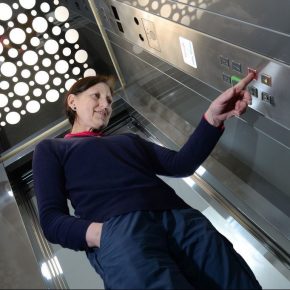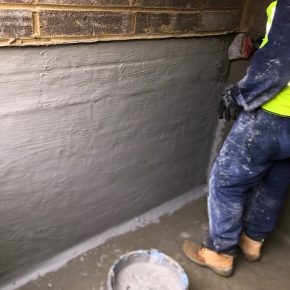
Stella Rooflight: What is a conservation rooflight?
Paul Trace, director of Stella Rooflight, discusses the unique properties of a genuine conservation rooflight…
What is a conservation rooflight?
If you know that you need conservation rooflights for your project, the chances are that you have searched online and found plenty of choice. But what is a conservation rooflight and are they all the same?
To better understand what makes a rooflight a conservation style, it is important to understand the history behind this type of glazing and why the design is so sought after, not just on period properties but also more modern projects.
Without the ingenious concept of a rooflight the vision of transforming unconventional space into a well-lit property would be a daunting task, and in some cases an impossible option. For that reason, the conservation rooflight could be considered a highly influential building feature, which has given the construction industry a solution to introducing natural light into a property.
Although rooflights, or skylights as they are sometimes known as, have been around for centuries they became more prominent during the Victorian era as technology and building aspirations were stretched and roof glazing boomed. One of the most famous Victorian building projects was the Crystal Palace, which in 1851 used glazing on an unprecedented scale to showcase just what could be achieved.
Mass-produced Victorian rooflights for residential use tended to be made from cast iron and the earliest examples would have smaller, lighter panes of glass. This was partially down to limits of glass technology at the time but also because of excise duties, which were imposed on glass by weight in the mid-18th century. These slim, single glazed rooflights with multiple panels of glass were unobtrusive in design and sat flush in the roof. Today it is this minimalist appearance that many people are seeking to achieve in their glazing designs.
As a result of their popularity, there are lots of conservation roof windows on the market, which can make choosing the right one virtually impossible unless one can identify what the differentiations are. An effective way to make this distinction is to look closer at the attributes of a true replica of a Victorian conservation rooflight.
What material is the conservation rooflight manufactured from?
If a conservation rooflight is all frame, then there is little point in having one. Genuine conservation designs should be manufactured with slim, clean lines and a low-profile to match the roofline. A number of skylight companies try to produce conservation rooflights using modern bulky aluminium profiles, which sit proud of the roofline, particularly slate. It is widely accepted that most authentic conservation rooflights are manufactured from steel because it provides great strength while offering a slim profile and excellent glass to frame ratios.
Single or double glazed?
Victorian rooflights would have been single glazed, however, today’s modern building standards are much higher and so single glazing does not meet the minimum requirements for thermal efficiency (Part L). Double glazing is now the most popular option for genuine conservation rooflights because glazing technology is such that a modern double glazed unit can provide a number of benefits while remaining reasonably slender.

Some conservation rooflight suppliers are keen to boast about offering triple glazing in their products, however, while this does offer a slightly improved thermal performance it comes at the expense of appearance. The optimal spacer bar thickness is 16mm so any decent triple glazed unit is going to be almost 50% thicker than a double glazed version. Now with a flush fitting profile being one of the main requirements of a conservation rooflight, the introduction of triple glazing makes that almost impossible on some roof types.
Glazing bars?
It is often a stipulation from the Conservation Officer that a conservation rooflight should have a glazing bar to replicate that original Victorian appearance. It is not always the case but it is definitely worth checking whether you need them before purchasing any conservation rooflight.
If your conservation rooflight does require a glazing bar then it should be a genuine one. This is an area that separates those producing close replicas to the original Victorian rooflights and those who are trying to pass off modern skylights as something more traditional. A genuine glazing bar should be something which not only divides the glazing but also provides additional strength to the casement.
Top hung or centre pivot?
Once again, if you are looking for a close replica of a Victorian rooflight then a top hung profile will be the one you should opt for. Not only does a top hung design offer a more authentic appearance, it maximises the space below because the casement doesn’t stick into the room. Smaller top hung rooflights also utilise beautiful brass ironmongery to operate the casement whereas centre pivot designs tend to rely on modern plastic handles, which are out of reach and offer nothing to enhance the internal aesthetics.
Is any old conservation rooflight suitable for my project?
Just because something is sold as a conservation rooflight, that doesn’t automatically make it suitable for all building types. If your building is Listed or in a Conservation Area then the criteria for using conservation rooflights are much stricter and you should always gain approval, not only for their use but also the manufacturer that you would want to use.
There are only a handful of companies that specifically make conservation rooflights and even fewer who design, manufacture and assemble in the UK. Many conservation rooflights available online are simply other products which have been spruced up to look like they meet the requirements of that type of product. If you ask a supplier what the main difference is between their conservation rooflight and those used on modern buildings and the answer is a stuck on glazing bar, then you should avoid at all costs. Likewise, there are many elements which go into a genuine conservation design and price is always a reflection on quality.
Is there anything else I should consider when choosing my conservation rooflight?
With the UK Government pursuing a carbon neutral environment it is imperative that every action is taken to reduce energy consumption. Rooflights are energy efficient as they let in large amounts of natural light thus reducing the need for artificial lighting. Bringing natural daylight into your home is about much more than creating a bright, welcoming environment, it’s about protecting your health and wellbeing and achieving a more positive way of life.
One way to ensure that you maximise the amount of available light is to increase the size of your rooflights… or is it? Just because you have a large rooflight this does not always guarantee lots of light and you should always check what the finished viewable (often referred to as clear viewable) area of the rooflight will be. You might think that a conservation rooflight with a whole frame size of 900mm (w) x 1200mm (h) would have a similar clear viewable area regardless of the manufacturer, but you would be wrong and bulky framed modern types or the flat rooflights posing as pitched conservation styles will let in considerably less light than a genuine steel framed version.
With so many choices available, choosing the right conservation rooflight can be a bit of a minefield but with the right guidance and advice it need not be a stressful experience.
For more information download ‘The Ultimate Guide to Conservation Rooflights’ – an independent guide to everything you need to know about specifying conservation rooflights – available exclusively on the Stella Rooflight website.
To find out more about Stella conservation rooflights visit: https://stellarooflight.co.uk/conservation-rooflights/
Visit Supplier's page
Latest news

31st March 2025
Stannah Lifts urges lift owners to prepare for the PSTN switch over
Stannah Lifts, a leading provider of lift solutions, is calling on businesses and facility managers to act now and upgrade their lift communications systems to ensure they are ready for the UK’s new high-speed, GSM digital network.
Posted in Accessibility, Articles, Building Industry News, Building Products & Structures, Building Regulations & Accreditations, Building Services, Facility Management & Building Services, Health & Safety, Information Technology, Interiors, Lifts, Restoration & Refurbishment, Retrofit & Renovation
31st March 2025
Delta: Lift Pit Waterproofing - Type A solutions
Delta Membranes has recently worked on a project whereby the scope was to provide a waterproofing solution to a newly constructed lift pit for a four-storey residential block.
Posted in Articles, Building Industry News, Building Products & Structures, Building Services, Case Studies, Concrete, Cement, Admixtures, Damp & Waterproofing, Facility Management & Building Services, Restoration & Refurbishment, Retrofit & Renovation
31st March 2025
HMG Paints renew partnership with Belle Vue Aces Speedway
HMG Paints has renewed its partnership with Belle Vue Aces for the 2025 season. This year marks a particularly exciting chapter for Belle Vue Speedway, as the club and National Speedway Stadium will host an electrifying double-header of the FIM Speedway Grand Prix in 2025.
Posted in Articles, Building Industry News, Building Products & Structures, Case Studies, Interiors, Paints, Paints, Coatings & Finishes, Posts, Restoration & Refurbishment, Retrofit & Renovation
31st March 2025
Ideal Heating sponsored CIBSE BPA Engineer of the Year announced
As the sponsor of the Engineer of the Year award at the Chartered Institution of Building Services Engineers (CIBSE) Building Performance Awards, Ideal Heating Commercial was delighted to present the award to Volkan Doda, Head of Design Technologies at Atelier Ten.
Posted in Articles, Awards, Building Associations & Institutes, Building Industry Events, Building Industry News, Building Products & Structures, Building Services, Facility Management & Building Services, Heating Systems, Controls and Management, Heating, Ventilation and Air Conditioning - HVAC, Pipes, Pipes & Fittings, Plumbing, Retrofit & Renovation
 Sign up:
Sign up: